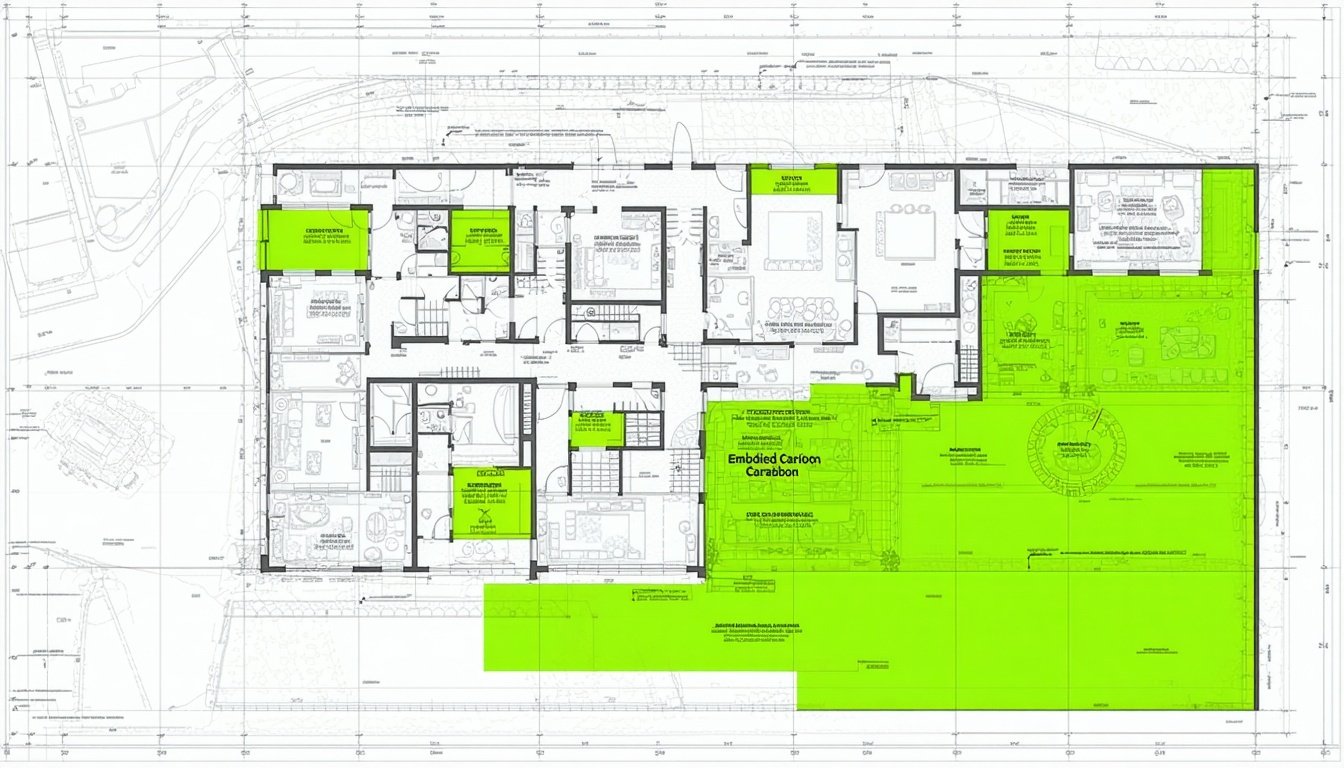Unlocking the potential to reduce embodied carbon in the Australian construction industry is crucial for meeting net zero targets and regulatory requirements, and these top tools are here to help.
The Growing Importance of Embodied Carbon Measurement in Australia
As Australia intensifies its commitment to achieving net-zero emissions, the importance of measuring and managing embodied carbon in the built environment has never been greater. The construction sector is a significant contributor to carbon emissions, not just through operational energy use but also through the embodied carbon in building materials and construction processes. With new regulations such as the National Construction Code 2025 mandating embodied carbon reporting, the industry is under pressure to adopt more sustainable practices.
Accurately measuring embodied carbon is essential for architects, engineers, developers, and sustainability professionals aiming to reduce the carbon footprint of their projects. The availability of specialised tools and databases makes it possible to benchmark, measure, and reduce embodied carbon effectively, ensuring compliance with new regulations and contributing to Australia's broader decarbonisation goals.
NABERS Embodied Carbon Rating Tool: Leading the Way
One of the leading solutions for measuring embodied carbon in Australia is the NABERS Embodied Carbon rating tool. Recently updated to provide a certified, industry-agreed method for measuring and verifying upfront embodied carbon, this tool is indispensable for new buildings and major refurbishments. The NABERS rating calculator, available on their website, enables project teams to estimate upfront embodied carbon emissions and potential rating results before construction begins.
The tool leverages an enhanced national database of material emission factors, integrating thousands of Environmental Product Declarations (EPDs) to provide accurate and reliable data. Certified ratings must be conducted by accredited NABERS Assessors, ensuring the integrity and consistency of the ratings. The NABERS tool is also aligned with the Green Star Buildings tool and the Climate Active Carbon Neutral Buildings Standard, making it a comprehensive resource for sustainability in the built environment.
Exploring the NSW Embodied Carbon databook (ECD)
For projects that may not utilise the NABERS tool, the NSW Embodied Carbon Databook (ECD) offers a valuable alternative. The ECD provides default emission factors and benchmarks, supporting projects in measuring their embodied carbon accurately. This resource is particularly useful for smaller projects or those in the early stages of planning where detailed embodied carbon data might not yet be available.
The ECD promotes consistency and transparency in embodied carbon measurement, helping project teams make informed decisions about material choices and construction methods. By using the ECD, professionals can ensure that their projects align with state and national sustainability goals, contributing to a more sustainable built environment across Australia.
Harnessing the Transport for NSW Carbon Tool for Infrastructure Projects
Infrastructure projects often have unique challenges and scale, making the Transport for NSW Carbon Tool an essential resource. This tool is specifically designed to measure and manage embodied carbon in large-scale infrastructure projects, providing accurate data and benchmarks that support sustainability goals.
Supported by national technical guidance, the Transport for NSW Carbon Tool ensures that infrastructure projects can achieve consistency, transparency, and comparability in their embodied carbon measurements. By leveraging this tool, project teams can make more sustainable choices in materials and construction methods, aligning with both regulatory requirements and broader environmental objectives.
Leveraging Embodied Carbon Tools for Sustainable Building Practices
Incorporating embodied carbon measurement tools early in the design and planning process is crucial for achieving sustainable building practices. By using tools such as the NABERS Embodied Carbon rating tool, the NSW Embodied Carbon Databook, and the Transport for NSW Carbon Tool, project teams can make informed decisions that reduce carbon footprints and ensure compliance with regulatory mandates.
Early adoption of these tools enables better material choices, improved project planning, and alignment with Australia's decarbonisation goals. As the construction industry evolves, leveraging these embodied carbon tools will be essential for architects, engineers, developers, and sustainability professionals committed to creating a sustainable built environment.







